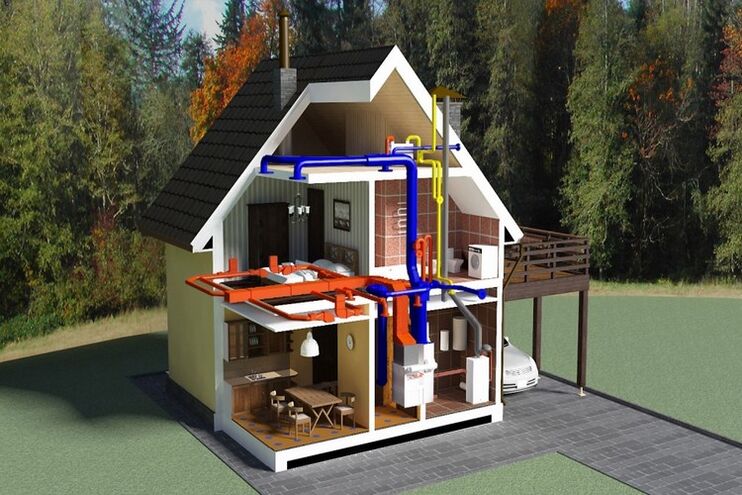Resource and energy saving technologies require mandatory integration into the production, distribution and consumption of electricity. Modern energy-saving technologies in the construction phase of the house are always combined with innovations in the field of construction, because a significant part of electricity is used to heat the house in cold weather and cool it in hot weather. This requires the planned use of energy-saving materials immediately. In addition, an individual home supply system will, in some cases, allow the complete abandonment of the traditional power supply method.
Energy-saving technologies in construction
The best example of energy-saving technologies in construction so far can serve as "energy-efficient homes" that maintain a comfortable temperature in the winter without the use of a traditional heating system, and in the summer without heating. air conditioning system.
Depending on the technological changes, such structures are also called Zero Energy House - "zero energy houses" or "passive houses".
To get as close as possible to the standards of such a house, include:
- install an individual boiler or other heat supply source, often connecting pumps that return heat from the ventilation duct, floor heat, or wastewater,
- to replace part of the solar electricity (collector) and to use the direct energy of the sun, in turn, competently in accordance with the heat balance of the building connecting the transparent and reflective structures,
- use modern thermal insulation materials, and this applies to both building materials and communication systems.
The energy-saving method described above assumes that the building will be the final recipient of electricity from power plants. But now, the possibility of a complete transition to individual power supply systems is perceived as an innovative experiment, when the building itself actually becomes a "power plant" and begins to distribute electricity to other consumers.

This is possible, for example, with the widespread use of so-called nano-photoelectric cells, one of the most promising solutions. In Freiburg, Germany, a local solar energy institute uses urban space as a kind of "testing ground" for solar technology testing, applies solar panels to the stadium, and restores all neighborhoods (58 residential buildings and an office building on the border). district) for the concept of new "active homes" The main obstacle to the widespread application of these technologies is the high cost of ultrafure industrial silicone used for batteries (about $ 450 / kg). Replaced with nanotechnology and a special carbon - fullerene. But so far, the productivity is 2. 5 times lower than silicon solar cells.
Energy-saving technologies in everyday life
The main direction in the creation of energy-saving technologies in everyday life is the individual regulation of energy consumption using "smart" technologies, depending on the following.
- personal habits and microclimate preferences of residents,
- the time of year (day) when the "smart" system resets itself, chooses to open, and at what intensity.
For example, an automatic home lighting system turns the light on only when needed, turns it off during the day, and turns it on in the evening when it is turned on by a built-in microphone. When there is noise within a radius of 5 meters, an energy-saving lamp lights up automatically and does not go out when someone is in the room.
But until these "intellectual" innovations become dominant, experts recommend using "protective" methods of electricity in everyday life.
- replacement of incandescent lamps with energy-saving lamps (with a reduction in consumption by 5-6 times) or more economical LED lamps,
- transition to high energy efficiency class (A- A +++) home appliances, which can show a 50% difference compared to older models,
- switching off devices (equipment) in standby mode: TVs, music centers and tape recorders that still consume 3-10 W of power when turned off but not turned off,
- Turn off the computer, which "eats" 70-120 kW / h per month, or put it to sleep while working day and night.
Special attention should be paid to the refrigerator, it is recommended:
- Do not place near the oven (increases energy consumption by 25-30%),
- do not fill with uncooled food,
- prevent a gap in the seal,
- Do not cover the radiator and do not bring the "back" close to the wall.
The application of energy-saving technologies in housing and communal services seems to be a transition to drivers with the function of optimizing the speed of rotation, depending on the actual load, which can save up to 50% of electricity when working in elevators or ventilation systems. .
























